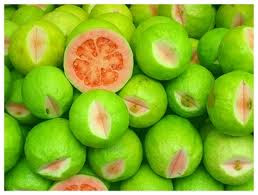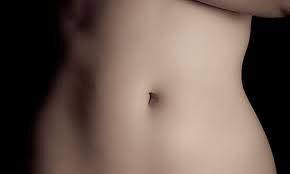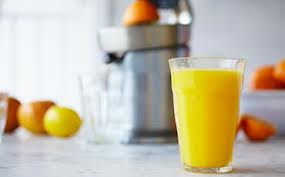By Dr. Mercola
The chiropractic profession contains some of the most profoundly innovative physicians that I am aware of, and Dr. Craig Buhler is one of them. His work focuses on the interrelationships between muscle function, range of motion, and restriction that contributes to pain. In 2002, he established the Advanced Muscle Integration Technique (AMIT) in a clinic in Utah, where I've seen him as a patient.
One of the reasons that motivated me to see him is his phenomenal success in treating world-class professional and Olympic athletes, and helping them improve their performance.
I first became aware of Dr. Buhler's work through Jeff Hays, the producer of the film
Doctored, which was recently released. Dr. Buhler and I are both featured in the film but he was actually one of the major inspirations for the film.
Dr. Buhler was the chiropractic physician for the professional basketball team Utah Jazz for 26 years. And as a result of his techniques, the team had the lowest player missed games due to injury (PMGI) rate in the NBA — 61 player-missed games due to injury within a 20-year long span, compared to the league average of 171 in the same timeframe.
"'Then, between 2001 and 2006 when I stopped having access to the players, we had the most rapid increase in PMGI rates in the league in the 25-year period,' he says. 'It validates what happens when you use the technique that I've developed and integrate it with good quality medical and training care.'"
As someone who is passionate about exercise, I'm particularly excited about Dr. Buhler's methods, because, invariably, when you participate in an aggressive exercise program you're bound to become injured at some point. Injuries and resulting chronic pain is also what typically ends a professional athlete's career, and it can certainly put a damper on anyone's quality of life.
History of the AMI Technique
How the AMIT therapy was developed is an interesting story in and of itself. It began with Dr. George Goodheart, a chiropractic physician from Detroit, Michigan, who developed a technique called applied kinesiology, and Dr. Allan Beardall, also a chiropractor.
"Dr. Goodheart discovered the relationships between organs and glands, muscles, and the vertebral levels in the spine,"Dr. Buhler explains. "Dr. Allan Beardall studied with Goodheart. Allan was nationally ranked distance runner, so he treated a lot of elite distance runners. Dr. Beardall found that elite athletes would come in with various types of injuries, and he would apply the chiropractic techniques he learned and the applied kinesiology techniques that he learned.A lot of the conditions got better, but others didn't. Or they'd get better until the athlete stressed themselves working out, and then they'd breakdown again. He said, 'You know, there's got to be a reason why they breakdown.'"
Dr. Beardall launched into an in-depth clinical research project, in which he studied the available chiropractic techniques to determine where, when and why they worked, or did not work. Then, he added acupuncture into the mix, which brought it to a whole new level.
"He defined eight reflex systems for 310 muscles in the body. At that time, Goodheart had discovered four reflexes for about 85 muscles," Dr. Buhler says. "Allan took Dr. Goodheart's work and expanded it dramatically. He redefined anatomy.
We defined divisions to muscle. Like the quadriceps: they are considered four muscles, but in reality there are 12 divisions to those complex muscle systems. He had developed ways of isolating and testing those muscles, so we could go through [a person] and isolate every single muscle in their body to determine whether they're neurologically and proprioceptively intact or not. We can find areas of instability, which show us where a person's vulnerabilities to injuries are, and that allows us to predict where injuries will occur."
Getting to the Root of the Problem is the Hallmark of any Successful Therapy
One of the reasons why Dr. Buhler's AMIT therapy is so profound is because it integrates so many effective techniques. Essentially, it incorporates the most effective techniques from chiropractic or acupuncture and other modalities for any given problem or area of your body.
One of the key discoveries was that if your muscle is overloaded beyond its ability to handle the stress placed upon it, either due to lack of conditioning or trauma, a couple of different things occur: Either you may tear the tissue, and/or your nervous system will deactivate the muscle through a series of reflexes called proprioceptors.
Your muscle system and nervous system relate to each other from within tiny muscle fibers called spindle cells, which monitor stretch. If your muscle is overloaded too rapidly, the spindle cells will temporarily inhibit the muscle. The next time you contract the muscle, it will fire again. Similarly, cells within your tendons called Golgi tendon organs also measure and monitor stretch. If your tendon is stretched too rapidly or exceeds its integrity, the Golgi tendon organs will temporarily inhibit the muscle. But the next time the muscle fires, it will again fire appropriately.
"But there's a fail-safe system," Dr. Buhler explains. "It's where the tendon attaches into the periosteum of the bone and the little fibers there are called Sharpey's fibers. Those fibers are loaded with little receptors that monitor tension. And if the integrity of those fibers are exceeded, they inhibit the muscle, just like a circuit breaker would inhibit an electrical circuit.
Once that happens, the muscle will still fire under passive range of motion. But if you load the muscle, it gives way. If you continue to load the muscle, your body creates pain at the attachment points to protect you. What the central nervous system does at that point is compute an adaptive strategy by throwing stress into the muscle next to it. Other tissues begin to take on more of the load for the muscle that's been injured."
When other tissues and muscles take over to protect the injured site, this adaptation "locks" into your neurology, which leads to altered or adapted movement patterns. Essentially, it alters how you move and use your body. While this takes stress off the injured muscle, allowing it to heal, the adapted muscle is at a mechanical disadvantage, making it more prone to injury. So that muscle then becomes the next site of injury. This can set into motion a vicious cycle of progressive injuries, cascading out from the original source.
Dr. Buhler echoes my own sentiments when he says that getting to the core problem is essential, as treating the adaptation, the symptom, will never allow for recovery. When you focus on the root of the problem, you can achieve dramatic change and healing Now, when a muscle has become neurologically and/or proprioceptively inhibited due to injury, it loses its ability to inhibit its antagonist, so the antagonist muscle remains tight through all planes of motion and never completely releases. A typical example of this is chronic hamstring problems, which is the result of the quadriceps becoming inhibited.
"When people come in with hamstring problems, invariably, I find a group of the quadriceps shut down," Dr. Buhler says. "Once I reactivate [the quadriceps muscle], they get off the table, the hamstrings are clear, and they no longer have problems with tight hamstrings."
Description of a Typical AMIT Session
A typical AMIT session begins with taking an in-depth case history — when and how the injury occurred, along with your health and medical history. This provides insight into the potential "layering" or cascade effect caused by your original injury, and the potential sources of your problem. At this point the patient's central nervous system is assessed by evaluating the atlas/axis/occiput complex, which is the upper part of your spine that affects the brain stem of your central nervous system directly. Next, a full assessment of basic muscle function is done, which also helps establish the functionality of your central nervous system. As explained by Dr. Buhler, starting from your head, each muscle is isolated to determine its neurological integrity. This is done using a form of muscle testing.
"I'm not testing for strength, which would be seen in break testing and which a lot of physical therapists and chiropractors do. What I'm looking for is the tonal quality of that muscle," Dr. Buhler explains.
Next comes the actual therapy process, which he refers to as an "innate guided systems approach." What this means is that your body creates symptoms, such as pain, as a way of communicating that there's a problem.
"We've learned through our conditioning that we just ignore the pain, or we take a medication to suppress the pain, which is no more than saying to the body, 'Shut up. I don't want to hear about it,' which allows the problem to become more advanced," he says. "When you take anti-inflammatories and pain pills for a condition that you're dealing with athletically, all that you do is set the body up for more damage, because you override the protective mechanism of your body. This approach honors your body, listens to your body, and uses symptoms as a communication system."
The therapy is designed to reactivate the muscle and re-establish pain free motion. Once function and range of motion has been reestablished, yoga or some other form of training program designed to strengthen the previously inhibited muscle can bring you to a whole new level of performance. Naturally, this is particularly valuable for professional athletes.
"We've dropped the time of a 5,000-meter speed skater by a minute and a half, simply by clearing the calf muscles and the quadriceps. That was accomplished in 24 hours," Dr. Buhler says. "And we've increased vertical jump on a basketball player by seven inches in 24 hours, simply by reactivating the quads and the calf muscles. That's staggering. That's unheard of. But it's an example of what happens when you reactivate and reinitialize those muscles back into the nervous system. It's pretty dramatic."
An Example of How AMIT Can Work "Like Magic"
A good example of how Dr. Buhler's method can achieve results akin to "miracle," is the technique he uses for sprained ankles, an injury caused by a sudden sideways or twisting movement of your foot. Typically, a severely sprained ankle can take you out of commission for several weeks. Dr. Buhler's manipulation technique can often get you back on your feet in a matter of minutes. There are three grades of severe ankle sprain.
- Grade 1: Overstretched ligament
- Grade 2: Slight partial ligament tear
- Grade 3: Complete ligament tear
According to Dr. Buhler, grade 1and 2 sprained ankles are "an easy fix." Unfortunately, the standard medical approach is to keep weight off the ankle for at least a week, using crutches. The second week, standard treatment typically includes some passive range of motion therapy. After that, you slowly start rehabilitating with more aggressive therapy. Recovery can take four to six weeks.
Dr. Buhler's model looks at this type of injury in a wholly different light. An inversion sprain, which is the most common, occurs when the talus bone — the top bone in your ankle — rotates and the heel bone counter-rotates. This causes the long bone on the outside of your ankle called the fibula to drop inferior and shift backwards at the attachment in your knee. That changes the dynamic of your joint mechanoreceptors, causing severe pain when you put any weight on the joints.
"The lateral stabilizers to the ankle muscle become inhibited because of the trauma. They no longer fire to support the joint. Every time you take a step, you're stepping and weight-bearing on a joint that's distorted and unstable, and your body automatically creates pain to protect you," Dr. Buhler explains. "You get the swelling, because the capillary hemorrhages. Your body again is having to deal with the inflammatory process and needs to begin the healing process."
To address this, the technique calls for adjusting the ankle mortise back into alignment, so the joint tracks properly. He then resets the lateral stabilizer muscles with a specific reflex method. In the beginning, when the muscles are challenged, they will be weak and painful. But, once they've been activated, upon retesting they are once again solid and pain free, and can withstand weight bearing.
"Now, when the athlete or the patient gets off the table and begins to walk, the first step is painful, the second step is less painful, and each subsequent step they take is less and less painful, to where they can run back and forth in the clinic without any pain. That way, walking and running actually becomes therapeutic, because you're stimulating the lymphatic drainage system," he says.
Summary of the Advanced Muscle Integration Technique (AMIT)
As explained by Dr. Buhler, each muscle in your body has the following points or reflexes that relate to it. All of these points or reflexes must be stimulated. When a muscle is inhibited, the corresponding reflexes will become painful.
- One acupuncture point
- Vascular point
- Lymphatic point
- Two organ or gland reflex points
- Origin and insertion of the muscle
- Spindle cells
In addition there are three vertebra in the spine, two of which are reactive that need to be adjusted. Dr. Buhler explains the process of testing and treating the muscle using these reflex points:
"'A person will wake up one morning with pain in their elbow, and it really hurts. They don't remember hitting themselves, but it's painful. They go to the doctor. They're diagnosed with epicondylitis or tennis elbow, and prescribed an anti-inflammatory. Well, that point may be an acupuncture point related to a muscle in the opposite knee,' Dr. Buhler says. "As we go through the therapy and we stimulate those reflex points, they are quite painful. People are kind of shocked at the fact that I can precisely isolate those painful spots. 'How did you know I hurt there? I've been hurting there for six weeks, and you nailed it,' they'll say. You go through that process of reactivating all those reflexes, and then you go back and retest the muscle for function. It's not a comfortable procedure, but it's effective."
Other Techniques Integrated into Dr. Buhler's Therapy
Dr. Buhler also integrates other techniques and modalities into his work, such as:
- The Nasal Specific Technique: Developed by the late Dr. Stober, a dual-licensed naturopathic physician and chiropractic physician who practiced in Portland, Oregon. The technique is based on manipulation of your skull sutures. They claim the bones of your skull fuse, but this is incorrect. Your cranium actually expands and rotates with each breath, and this movement is tied into your cerebral spinal fluid.
Dr. Stober used the technique in the treatment of children with Down syndrome, muscular dystrophy, sinus problems, migraine headaches, concussions, and Meniere's disease. The technique involves inserting a small balloon, the size of your little finger, into the nasal passage, where it is inflated and released a number of times on each side. This tends to expand your cranium from the inside out, unlocking those suture lines, and reestablishing the cranial mechanism.
- Network Spinal Analysis: Developed by Donny Epstein, this technique involves toggling and adjusting your atlas with very light-contact adjustment.
Epstein's position is that when you experience emotional stress and trauma, your central nervous system goes into a state of contraction. Surrounding your brain and spinal cord is the meningeal system. This tissue is attached via tiny ligaments called dentate ligaments to the base of your spine and upper cervical spine. In response to emotional stress and trauma, the meningeal system contracts, pulling those dentate ligaments, which can distort the vertebra from inside your spinal canal.
Regular meningeal adjustments aren't as effective to address this kind of distortion. But what Epstein discovered was that by lightly holding specific points on the sacrum and different parts of the spine, the central nervous system begins to release that meningeal tension.
More Information
To learn more, see Dr. Buhler's website,
www.AMITMethod.com. It includes information on each of the techniques, along with testimonials from the likes of John Stockton, Picabo Street and others. There, you can also find a list of providers around the United States that have been trained in these techniques.
Unfortunately there are only a dozen clinicians across the country who are trained in his technique, but Dr. Buhler is planning on training more clinicians in the near future.
 The bottom-line: replace sugary and artificially sweetened drinkings with unsweetened options like:
The bottom-line: replace sugary and artificially sweetened drinkings with unsweetened options like: 
















